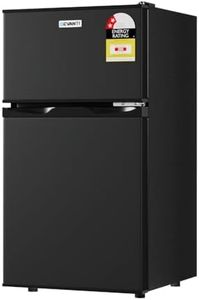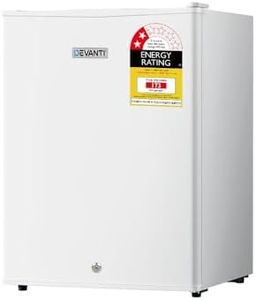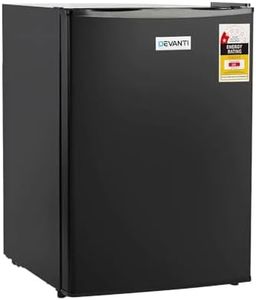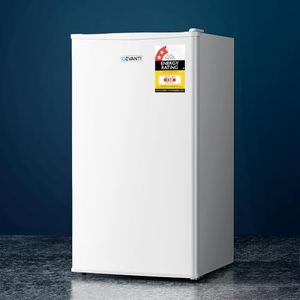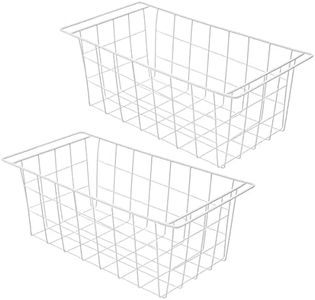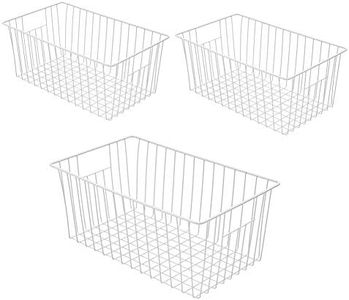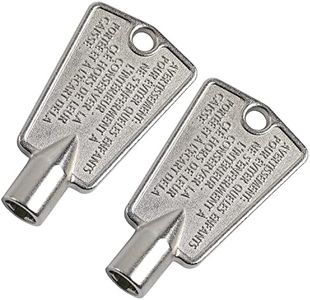We Use CookiesWe use cookies to enhance the security, performance,
functionality and for analytical and promotional activities. By continuing to browse this site you
are agreeing to our privacy policy
10 Best Chest Freezers
From leading brands and best sellers available on the web.Buying Guide for the Best Chest Freezers
Choosing a chest freezer is an excellent idea if you need to store a lot of frozen food, have unpredictable freezing needs, or simply want backup freezer space alongside your fridge-freezer combo. Picking the right chest freezer involves considering space, energy use, how you plan to access and organize your food, and how the freezer fits into your daily life. Understanding some basic specs will really help you find the right one for your household without ending up with something that's too big, too small, or too inconvenient.CapacityCapacity in chest freezers refers to how much food you can store, measured in liters or cubic feet. This spec is important because it determines how much you can freeze at once — too small, and you might run out of room; too big, and you could waste energy and space. Small freezers (under 7 cu ft) work well for singles or couples or as a secondary freezer. Medium capacities (7-14 cu ft) suit families or those who buy food in bulk. Large capacities (over 14 cu ft) are best if you freeze lots of large items or need to store plenty of seasonal food. Think about your shopping and cooking habits to decide how much space you really need, and remember to consider the exterior size so it fits where you want to place it.
Energy EfficiencyEnergy efficiency tells you how much electricity the freezer will use, affecting both your energy bills and your environmental impact. Look for official energy ratings or annual energy consumption figures. Efficient models save money over time and are friendlier to the planet. If you plan to use your chest freezer regularly or keep it running all year, focusing on higher efficiency is especially worthwhile. Usually, newer models are more efficient—compare ratings and aim for models that offer clear energy savings.
Defrost TypeDefrost type means how you deal with frost build-up inside your freezer. Manual defrost models need you to empty and unplug them for cleaning, while some modern freezers offer features that slow down frost build-up, making defrosting easier but not fully automatic. Manual defrost chest freezers are the most common and usually more energy efficient, but you’ll need to plan regular maintenance. If you prefer less maintenance work, look for features that reduce frost, but be prepared for higher costs and slightly less energy savings.
Temperature ControlTemperature control allows you to adjust the coldness of the freezer to suit the food you’re storing. Basic models provide simple dial controls, while more advanced ones offer precise digital thermostats. If you’ll store a variety of foods or need specific freezing conditions (like for game meat or breast milk), better control can be beneficial. For everyday home use, a simple manual control is sufficient, but if you need more precision, look for models that allow you to easily monitor and adjust the temperature.
Compartments and BasketsCompartments and baskets refer to the internal organization options. Chest freezers tend to have a large open space inside, but many come with removable baskets or dividers that help sort your food. This is important for easy access and preventing food from getting lost or forgotten at the bottom. If you care about keeping things organized or need to access certain items often, look for freezers with more organizational features. If you’re freezing large, bulky items, you may not need as many compartments—consider your usual storage style.
Noise LevelNoise level indicates how loud the freezer is during operation. This is measured in decibels (dB). Most modern chest freezers are fairly quiet, but if you plan to keep yours in a living area, basement office, or anywhere noise might matter, check the noise rating. If silence is important for your environment, choose a model with a lower decibel rating.
Power Outage Performance (Holdover Time)Power outage performance, or holdover time, shows how long the freezer can keep food frozen during a power cut. Better insulation generally results in longer holdover times. This is important if you live in an area with unreliable electricity, or if you store large quantities of food you wouldn’t want to lose. If power outages are a concern in your area, look for models that specifically mention long holdover times.

